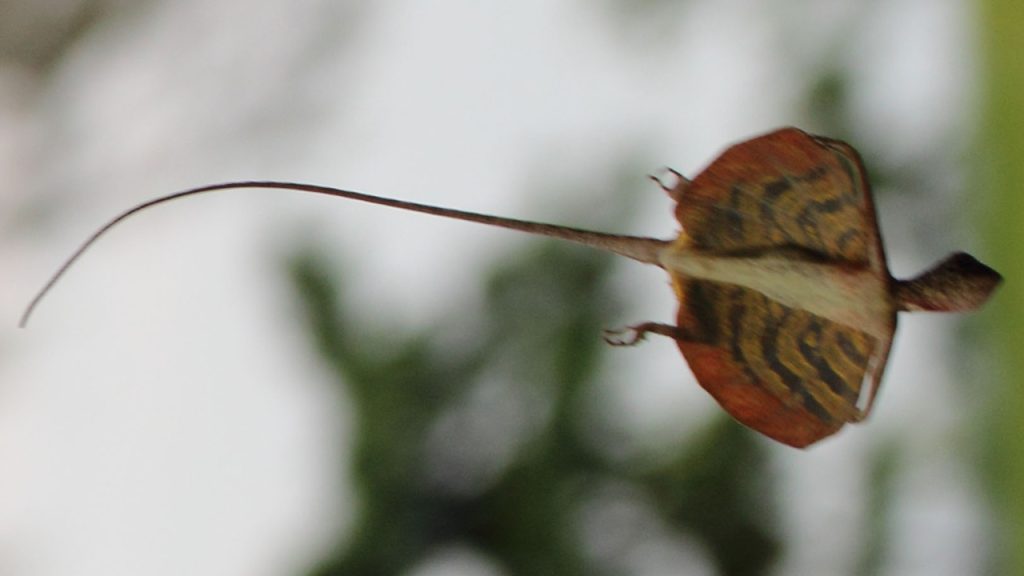If you think dragons are just the epic imaginary creatures of fantasy books and movies, you’ve never been to a Southeast Asian jungle. There, dragons are very real … albeit a bit smaller than the Game of Thrones version.
Draco lizards are abundant in forests and jungles in Asia and Southern India, and their range extends to Borneo and the Philippines. Averaging just 8 inches long, the Draco lizard would make a good snack for any number of predators that roam the forest floor, so it developed a unique defense mechanism: it can fly.
GIF: J. Maximilian Dehling via Wikimedia Commons
More accurately, the Draco lizard can glide, and of course it’s not the only animal to do so. There are other gliding lizards, like geckos that use a parachute-esque membrane to move between trees, and flying squirrels, which have a built-in wingsuit to catch air currents. But nothing flies like a dragon.

In a study supported by the University of Koblenz, in Germany, researcher Maximilian Dehling observed and photographed Draco lizards in flight, and found that they don’t simply unfurl their “wings” – a membrane called patagia – as scientists long believed.
Instead, Dehling discovered, the lizards reach back with their arms, grab the patagia from between special elongated ribs, and spread them forward. This makes them much different fliers from other gliding species. The Draco can steer, change its course in mid-air, and even do maneuvers like barrel rolls.
“These findings not only shed a new light on the flight of Draco but also have implications for the interpretation of gliding performance in fossil species,” Dehling said. In other words, it can help us better understand how flying dinosaurs took to the sky.
Paleontologists know that ancient reptiles like Sharovipteryx, Coelurosauravus, and Icarosaurus ruled the skies, but the fossil record leaves more questions than answers about how they flew. The discovery of the Draco lizard’s unique anatomy and talent could help. Icarosaurus, for instance, had expanded ribs much like the tiny modern lizard’s, which could imply it flew in a similar fashion.
